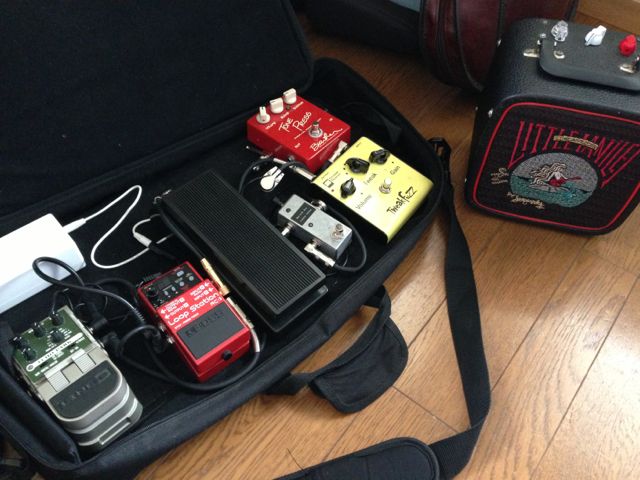
Unfortunately there's a typhoon headed our way, so it's a bit overcast. It could mean I'll be waiting a while at Narita airport for the customers I have to pickup today, but I have plenty to read while I'm waiting. It will also give me plenty of time to think about whether or not to sell the Little Lanilei amp. I had intended to get rid of it along with the VT20, but needed to test it first. So I went into a nearby rehearsal studio for an hour (at $5/hr.), and made some noise. Eventually, I started enjoying myself with the test rig below.

I also tested a new true-bypass A/B box to replace my Boss LS-2, and used it to switch between the Little Lanilei and the studio's ubiquitous Roland JC-120. The cool thing about this set up is that I can also select loop channels on my Boss RC-3. So I recorded a clean single-note part through the JC, and then some wah-wah chords with the LL while RC-3's built in drums play through both through the Echo Park in stereo! It also meant I could switch between the wah and fuzz without connecting them to each other, thus avoiding the infamous vintage wah-to-fuzz impedance issue (and a stubborn wah switch.)
I don't have a particular preference for true-bypass stomp boxes, but my experience with vintage-styled wahs & fuzzes is that they sound best interacting with the guitar's pickups without buffers. So if a pedal is going before one of these, like my compressor, it should be true-bypass. If it comes after, I think I prefer a buffer in case it has to drive a long cable from the front of the stage to the amp at the back of it.
Do you have a preference for true-bypass or buffered pedals? How does it work within your signal chain?
For today's G&L topic, I'd like to know how to make fine adjustments to neck angle the micro-tilt screw? I don't mean the factory setup, but specifically if you wanted to make the angle a bit shallower, how many turns (or fractions of a turn) would you make? How much do you loosen the neck screws when you make adjustments? Do you retighten them in any particular order? Does anyone use shims? Responses from 3-bolt owners especially appreciated?